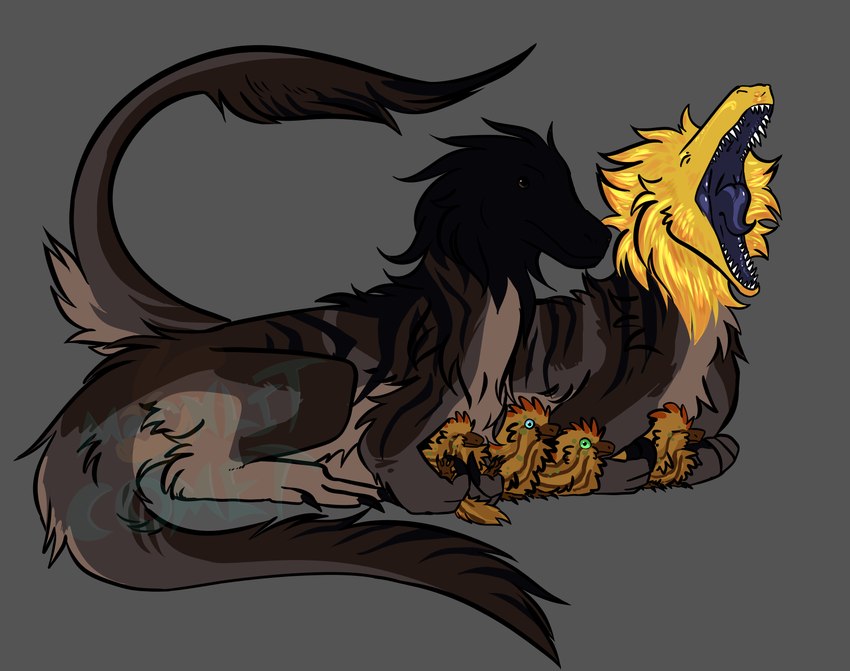Description
I like to make fictional and speculative dinosaur species for my worldbuilding project. Here's a duo of cabeça-de-tochas with their four babies.
Attached lore
Cabeça-de-tochas are herrerasaurids that originate from Raitera. "Torch-head" is the Common name, and a literal translation of its Portuguese name. It gets its common name from its body appearing like a burned-out torch, with a combination of coal dust and soot coating its feathers as well as naturally all-black feathers and skin on its face. Its scientific name comes from its pyromaniac nature, which has led to many human deaths and a well-earned fear of this predator.
They're big, cunning pyromaniacs. Cabeça-de-tochas are known to be extremely cruel and intelligent, having levels of intelligence rivaling that of young humans and thus seem to be capable of understanding malevolence to an at least simple degree. Cabeça-de-tochas prefer their food cooked, so they will frequently light small forest fires and roast any animals living inside. They are also sometimes known to hang around fire-breathing dragons, occasionally becoming companions or pets in exchange for promises of delicious cooked meat.
This image is of a domestic mated pair of cabeça-de-tochas, one female and one male in breeding plumage. With them are their four young chicks, just under a year old. The male is typically not present for rearing chicks in wild cabeça-de-tochas, but domesticated ones show a peculiar trait of being more amicable towards each other.
Despite not changing much in appearance from their wild counterparts, domestic cabeça-de-tochas are much friendlier and more affectionate, even being willing to work in groups and live in colonies when their wild counterparts are solitary. They are irreversibly genetically changed from their wild ancestors, and a proposed problem is raised from the idea of domestic cabeça-de-tochas escaping, becoming feral, and breeding with wild populations to create more social individuals. Such colonies could pose problems with increased forest fire dangers.

Hakar-Kerarmor
MemberThey're so fluffy!
Login to respond »